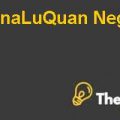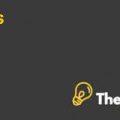
Cola Wars in China: The Future Is Here
- 1. What international strategy and modes of entry did Coke/Pepsi use to penetrate the Chinese market? How effective were these choices?
The multinationals entered into the Chinese market in the year 1980 and along with their entry; marketing, advanced production technology and cutting-edge management expertise were introduced in China’s soft drink industry. Both the Pepsi Cola and the Coca Cola entered the Chinese market with the help of joint ventures. With China’s entry in World Trade Organization (WTO) in 2001, China’s soft drink industry was expected to develop even more rapidly and competition was already growing as restrictions on foreign investment were lifted.
In early 1980s, before Pepsi Cola and Coca Cola entered China, more than 10 domestic cola manufacturers produced cola but with little marketing as revenues remained small. With the arrival of the two multinational giants, local producers found it hard to compete and gradually withdrew from the market or established joint bottling ventures with the two giants.
Coca Cola first established their bottling plants in Shanghai and Tianjin in 1927, which were shut after the communist revolution in 1949. In 1979, when Coca Cola re-entered China, following the re-establishment of relations between China and the United States, it became the first American consumer product to return to China.
In 2000, it moved marketing headquarters to China. By 2002, Coca Cola had a total of 28 bottling plants in China. In most of these joint ventures, Coca Cola didn’t have majority shareholding.
In 1981, Pepsi Cola signed a deal with the Chinese government to establish a joint venture bottling plant in Shenzhen. By 2002, the company had invested a total of US$500 in China on 14 bottling plants and employed close to 10,000 people.
The strategy of entering the Chinese markets with the help of joint ventures does not remain effective for a very long time. As in 2002, Pepsi Cola encountered some difficulties with a local joint-venture partner. Pepsi Cola applied to a commercial arbitration court in Stockholm to cancel its contracts with the joint venture partner in Chengdu, Sichuan Province. This was Pepsi Cola’s main market. Pepsi Cola maintained that it had been stopped from exercising its rights under the joint venture contract and alleged that there were many financial mis-conduct within the local company.
Both Coca Cola and Pepsi Cola are also working on their distribution policy, according to a report in “China Business.” Coca Cola and Pepsi Cola had never been directly involved in the sales of their products. Instead, their bottlers managed sales in their assigned territory, relying on distributors to cover areas that their own systems could not serve. Both Coca Cola and Pepsi Cola follow the strategy of setting strict sales targets for bottlers and in turn bottlers would set targets for distributors. Bonuses were conditional on attaining these goals. Distributors paid an up-front for goods and could not return un-sold merchandise. However, different wholesale prices in various regions and the incentive of the bonus resulted in distributors selling across provinces to achieve their sales targets even though both companies had strict policies against cross-territory sales. Identifying problems of the current system, the two companies had recently re-defined roles of bottlers and distributors. Distributors were previously in charge of carrying inventory, delivering to the retailer and their profit would come from the volume handled however, they no longer had any discretion over selling prices; bottlers were responsible for order taking, promotion and product display at the retail end and retained ownership of the product until the retailer bought it.
- 2. What resources, capabilities, and competencies enabled Wahaha to compete successfully against Coke and Pepsi when most other local Chinese soft drink manufacturers had failed?
RESOURCES
Tangible resources
Financial resources: The Wahaha Company is a financially sound company as it grossed a major market share in various markets for instance; RMB400 million in Natrient Beverage for children in China, RMB1 billion in purified water market. They had rapid brad extensions. They also acquire loss-making companies. Wahaha maintained that its revenues from other products could support Future Cola through a price war.
Physical resources: In a vast country where logistics are difficult, Wahaha’s network was able to quickly deliver its products, reaching even remote corners of China within days.
Organizational resources: Marketing, logistics management research and development (R&D) were centralized at headquarters, while subsidiaries were engaged in production. Wahaha’s marketing was clearly home grown.
Technological resources: For surviving in the market they obtain the world class production technology by partnering with the giant French food company, Groupe Danone. The two companies established several production-oriented joint ventures. Withe Danone eventually launched advanced production lines for bottling water, milk and tea.
Intangible resources
Human Resources: Founder and General Manager Zong Qinghou was a charismatic leader. He liked to make decision based on the information that is collected by the market research conducted through his own company. He was an experienced person who fully understands the Chinese market.
Reputational resources: Wahaha was a well-known name in the Chinese market. As Wahaha’s advertising targeted the mass market and not the wealthier urban consumers, it had recognition in wide region. Prices of its products were usually lower than those of rival products from its multinational competitors. Moreover, the CSR activities such as founding elementary school, Children’s palace and Summer Olympics Games have also created the name of the organization in the minds of consumers. Celebrity endorsements were also used to strengthen the brand name.
Innovation: In 2002, Wahaha began implementing an information system that would permit distributors and Wahaha to exchange information in real time.
CAPABILITIES
| Functional Areas | Descriptions |
| Financial Strengths | The Wahaha Company is a financially sound as it grossed a major market share in various markets for instance; RMB400 million in Natrient Beverage for children in China, RMB1 billion in purified water market. They had rapid brad extensions. They also acquire loss-making companies. Wahaha maintained that its revenues from other products could support Future Cola through a price war. |
| Distribution | Key success factors for Wahaha were the unique relationships that were developed with distributors over previous 10 years. Wahaha partnered with local distributors and its initial promotional efforts on entry into a region included distributors rather than end consumers. However, most multinationals established their own distribution networks in which most of them suffered losses. |
| MIS | In 2002, Wahaha began implementing an information system that would permit distributors and Wahaha to exchange information in real time. Wahaha’s local offices supported them in retail coverage and inventory management. |
| Human Resource | Founder and General Manager Zong Qinghou was a charismatic leader. He liked to make decision based on the information that is collected by the market research conducted through his own company. He was an experienced person who fully understands the Chinese market. |
This is just a sample partial case solution. Please place the order on the website to order your own originally done case solution.













